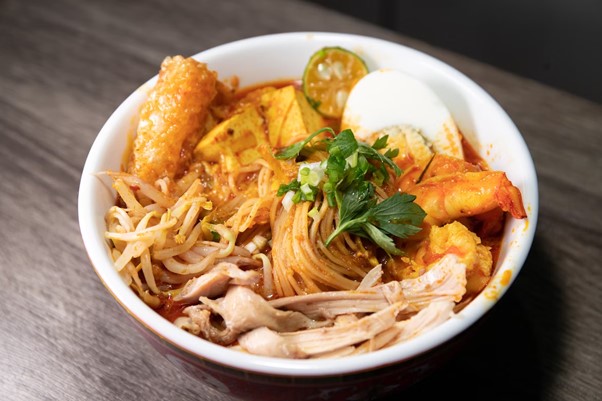Peranakan Cuisine: The Unique Blend of Chinese-Malay Flavors in Singapore
Peranakan Cuisine: The Unique Blend of Chinese-Malay Flavors in Singapore, Peranakan cuisine, also known as Nyonya cuisine, is a remarkable culinary heritage that emerged from the intermingling of Chinese and Malay cultures in Singapore. This fusion of flavors has created a distinct and vibrant cuisine that tantalizes the taste buds. In this article, we will explore the rich flavors of Peranakan cuisine and highlight an essential ingredient that promotes healthier eating: low-sodium soy sauce.
Table of Contents
The Unique Blend of Chinese-Malay Flavors in Peranakan Cuisine
Peranakan cuisine combines the best of Chinese and Malay flavors, resulting in a harmonious fusion of spices, herbs, and ingredients. This culinary tradition dates back centuries when Chinese immigrants settled in the Malay archipelago and married locals, giving rise to a unique culinary heritage.
Low-Sodium Soy Sauce: A Healthier Alternative
Low-sodium soy sauce provides a healthier alternative for individuals looking to reduce their sodium intake without compromising on flavor. It allows Peranakan cuisine enthusiasts and those following a low-sodium diet to enjoy the exquisite taste of this cuisine while being more conscious of their health.
Peranakan Classics Made with Low-Sodium Soy Sauce
- Ayam Buah Keluak: Ayam Buah Keluak is a signature Peranakan dish featuring chicken cooked in a thick, rich sauce made from buah keluak nuts. By incorporating low-sodium soy sauce, the dish remains true to its traditional flavors while reducing the overall sodium content.
- Beef Rendang: Beef Rendang, a beloved Peranakan curry dish, is rich in spices and slow-cooked to perfection. By using low-sodium soy sauce in the marinade and reducing the amount of traditional soy sauce, chefs can maintain the iconic flavor profile while lowering the sodium content.
- Nyonya Laksa: Nyonya Laksa is a flavorful soup that combines Chinese and Malay elements, featuring a spicy coconut milk broth. With the inclusion of low-sodium soy sauce, the soup can be enjoyed by health-conscious diners without compromising on the complex flavors.
Promoting Healthier Eating in Peranakan Cuisine
- Balancing Sodium with Fresh Herbs and Spices: In Peranakan cuisine, the abundant use of herbs and spices helps to balance the flavors, reducing the need for excessive salt or sodium-rich ingredients. This approach allows chefs to create delicious dishes that are lower in sodium without compromising the authenticity of the cuisine.
- Reduced Sodium Sauces and Dipping Condiments: Chefs are incorporating low-sodium soy sauce into sauces and dipping condiments, allowing diners to enjoy a wide range of Peranakan dishes while minimizing sodium intake. By utilizing this alternative, the rich flavors can still shine through without overwhelming sodium content.
The Benefits of Low-Sodium Soy Sauce in Peranakan Cuisine
- Maintaining Heart Health: By choosing low-sodium soy sauce in Peranakan cuisine, individuals can better manage their sodium intake, contributing to heart health and maintaining healthy blood pressure levels.
- Accommodating Dietary Restrictions: Low sodium soy sauce is a suitable choice for individuals with dietary restrictions, including those following low-sodium diets. Its incorporation into Peranakan dishes ensures that everyone can enjoy the delightful flavors of this unique cuisine.
Conclusion
It is a delightful fusion of Chinese and Malay flavors, creating a culinary heritage that is distinct to Singapore. With the introduction of low-sodium soy sauce, individuals can savor the vibrant flavors of Peranakan dishes while adopting a healthier approach to dining. Whether you are indulging in Ayam Buah Keluak or relishing the rich spices of Beef Rendang, low-sodium soy sauce allows you to enjoy while keeping sodium intake in check. So, embark on a gastronomic journey, exploring the unique blend of Chinese-Malay flavors in Peranakan cuisine, conscious of the healthier options available with low-sodium soy sauce.

